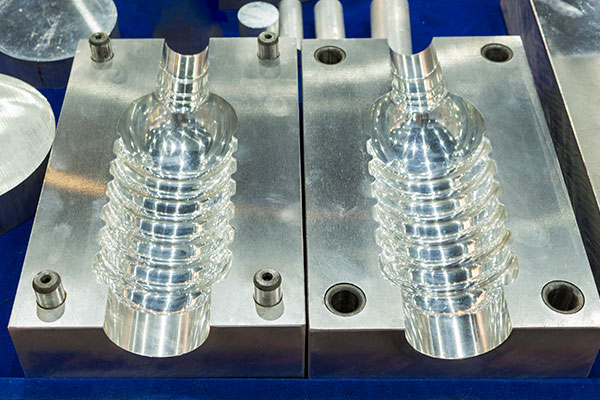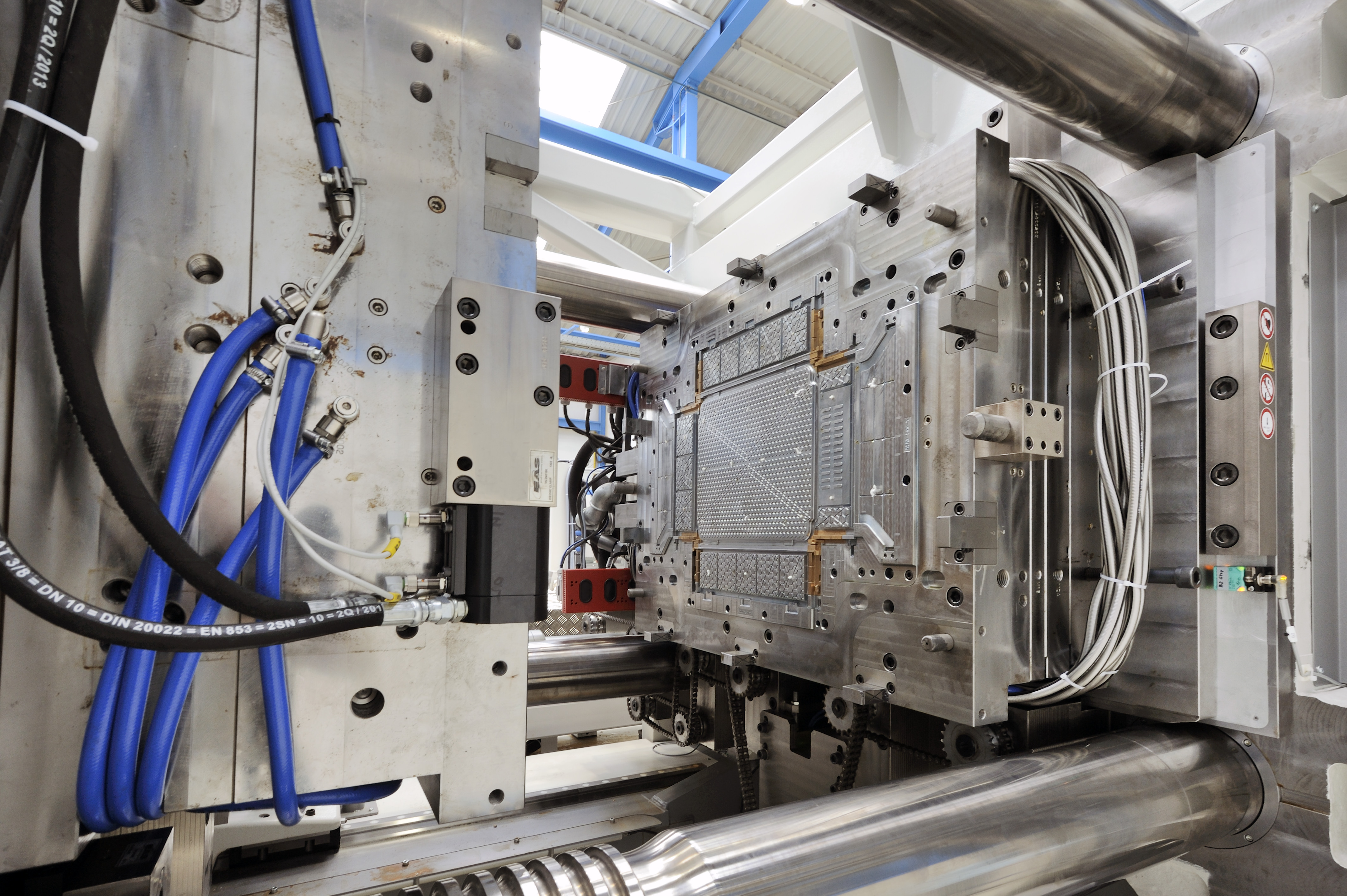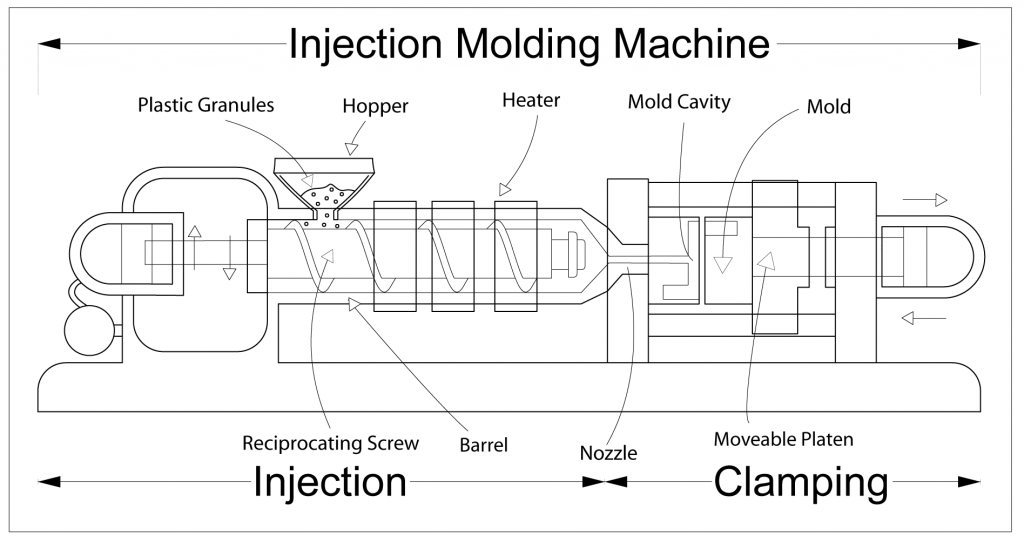Comprehending the Plastic Injection Molding Process for High-Quality Manufacturing
Comprehending the Plastic Injection Molding Process for High-Quality Manufacturing
Blog Article
Recognizing the Fundamentals of Plastic Shot Molding Processes
Plastic shot molding offers as a foundation of contemporary manufacturing, providing a systematic technique to creating complicated components with accuracy. Discovering these necessary aspects can disclose how even small changes can lead to significant renovations in manufacturing results, raising inquiries regarding the potential for development in this established procedure.
What Is Plastic Injection Molding?
Plastic injection molding is a widely used production process that changes thermoplastic and thermosetting materials into precise and complicated forms. This method is preferred for its capability to generate high volumes of similar components with outstanding accuracy, making it an essential approach in various markets, consisting of automotive, durable goods, and medical gadgets.
The process involves thawing the picked plastic product and injecting it into a mold and mildew under high stress. The mold, created to the specifications of the preferred part, permits the liquified plastic to materialize as it solidifies and cools down. As soon as the product has hardened, the mold is opened, and the completed part is expelled.
Plastic shot molding offers several advantages, including minimized waste, uniformity in manufacturing, and the capacity to include detailed layouts that might be testing with other manufacturing methods. Additionally, it supports a broad variety of materials, each providing distinct buildings that can be customized for details applications. As industries proceed to introduce, plastic shot molding continues to be at the center, making it possible for the growth of sophisticated products that meet developing consumer demands.
The Shot Molding Refine
The injection molding process is a sophisticated technique that entails numerous crucial stages to produce premium plastic components. Plastic pellets are fed right into a warmed barrel where they are melted right into a thick liquid. This molten plastic is then infused under high stress into a precision-engineered mold and mildew, which shapes the product right into the preferred form.
As soon as the mold and mildew is filled, the plastic is allowed to strengthen and cool down, taking the shape of the mold and mildew tooth cavity. Cooling time is essential, as it affects the cycle time and the last residential properties of the molded component. After adequate cooling, the mold and mildew opens, and the finished part is ejected using ejector pins.

Materials Used in Injection Molding
Numerous products can be made use of in the shot molding procedure, each offering special buildings that accommodate details applications. One of the most frequently used materials include thermoplastics, thermosetting plastics, and elastomers.

Thermosetting plastics, like epoxy and phenolic materials, undertake a chemical change throughout the healing process, leading to an inflexible, inflexible structure. These products are ideal for applications needing high warm resistance and architectural integrity, commonly made use of in automobile parts and electric insulators.
Elastomers, consisting of silicone and rubber-based materials, offer adaptability and strength. Their special homes make them ideal for applications that require flexibility, such as gaskets and seals.
Additionally, specialty materials like bio-based plastics and composites are getting grip for their ecological advantages and boosted efficiency features, widening the extent of shot molding applications in numerous sectors. Recognizing the properties of these materials is essential for selecting the suitable type for particular projects.
Advantages of Shot Molding
Shot molding attracts attention as an extremely effective manufacturing process that offers numerous benefits for generating complicated parts with precision. Among one of the most considerable benefits is the ability to develop detailed layouts that would certainly be difficult or impossible to accomplish with other methods (Plastic Injection Molding). The procedure enables detailed attributes and tight tolerances, making certain top notch components
Furthermore, injection molding is recognized for its fast production capacities, making it a suitable option for high-volume production. When the mold is developed, parts can be generated swiftly, decreasing preparations and boosting overall performance. This efficiency not just lowers manufacturing costs yet also gives an affordable side on the market.
The versatility of materials made use of in injection molding better improves its allure. A wide variety of thermoplastics and thermosetting polymers can be employed, enabling suppliers to select products that ideal meet their certain requirements, including toughness, flexibility, and warm resistance.
Additionally, the procedure minimizes waste, as excess material can commonly be reused and recycled. This sustainability facet contributes to a decreased ecological influence, making injection molding a responsible manufacturing selection. In general, the advantages of injection molding make navigate here it a favored technique for numerous markets.
Elements Impacting Product Top Quality
While many aspects can influence item top quality in injection molding, comprehending these aspects is important for achieving optimum outcomes. Trick facets include material choice, refining criteria, and mold layout.
Product choice plays a vital function, as different polymers exhibit unique residential or commercial properties that affect flowability, strength, and thermal security. Poor product option can lead to flaws such as bending or incomplete dental filling.
Handling parameters, consisting of cycle, pressure, and temperature time, should be diligently controlled. Variants in these settings can result in disparities partly measurements and surface area coating. Exceedingly high temperatures may create deterioration of the polymer, while insufficient pressure can result in short shots.
Mold layout is similarly vital, as it establishes the circulation of the molten plastic and the cooling process. Improperly made mold and mildews may cause uneven air conditioning prices, leading to residual stresses and dimensional errors.

Final Thought
To conclude, plastic injection molding functions as a critical production process that makes it possible for the reliable production of top notch elements. Mastery of the shot molding procedure, consisting of the understanding of products and the influence of numerous factors on item quality, is necessary for achieving ideal outcomes. The advantages of this method, such as cost-effectiveness and layout versatility, further underscore its significance across numerous markets, strengthening its standing find here as a recommended selection for high-volume production.
Plastic injection molding serves as a foundation of contemporary production, giving a methodical method to creating intricate elements with accuracy.Plastic injection molding supplies numerous advantages, including lowered waste, consistency in production, and the capacity to integrate detailed styles that may be challenging with various other manufacturing methods (Plastic Injection Molding). As sectors proceed to introduce, plastic injection molding remains at the forefront, allowing the advancement of innovative items that fulfill progressing consumer demands
The injection molding process is an innovative method that entails several key phases to generate high-quality plastic elements.In final thought, plastic injection molding serves as an important manufacturing process that enables the efficient manufacturing of top quality elements.
Report this page